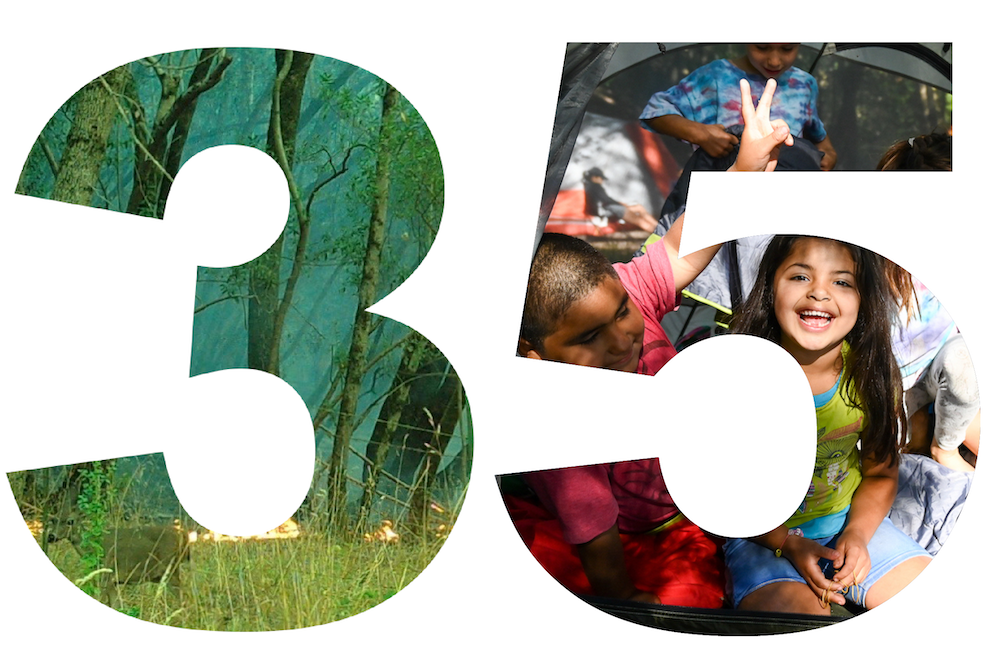
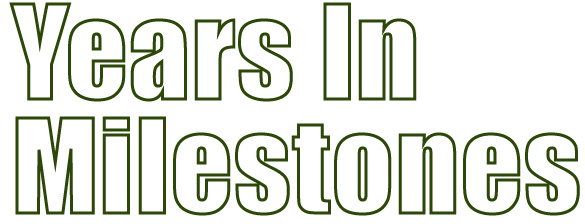
We know that we have something special in Sonoma Valley—a community that loves the natural surroundings and cares about each other.
Your generous support of Sonoma Ecology Center lays the foundation for the important work ahead in the areas of LAND, WATER, BIODIVERSITY, COMMUNITY, AND CLIMATE.
Our Origin Story
Sonoma Ecology Center was founded in 1990 after the first global Earth Day celebration, held locally on the Sonoma Plaza.
Sonoma Valley’s first Earth Day drew thousands of people together around the idea that Sonoma Valley is a special place we live in and love, and it is worthy of our care. Parades, green technology demonstrations, music, films, food, dancing, speeches marked this momentous celebration.
After Earth Day in 1990, we knew that something important had happened. Building on this momentum, Sonoma Ecology Center was founded to continue the education and bridge-building functions Earth Day had launched, and continue to help our community take care of this place we all love.
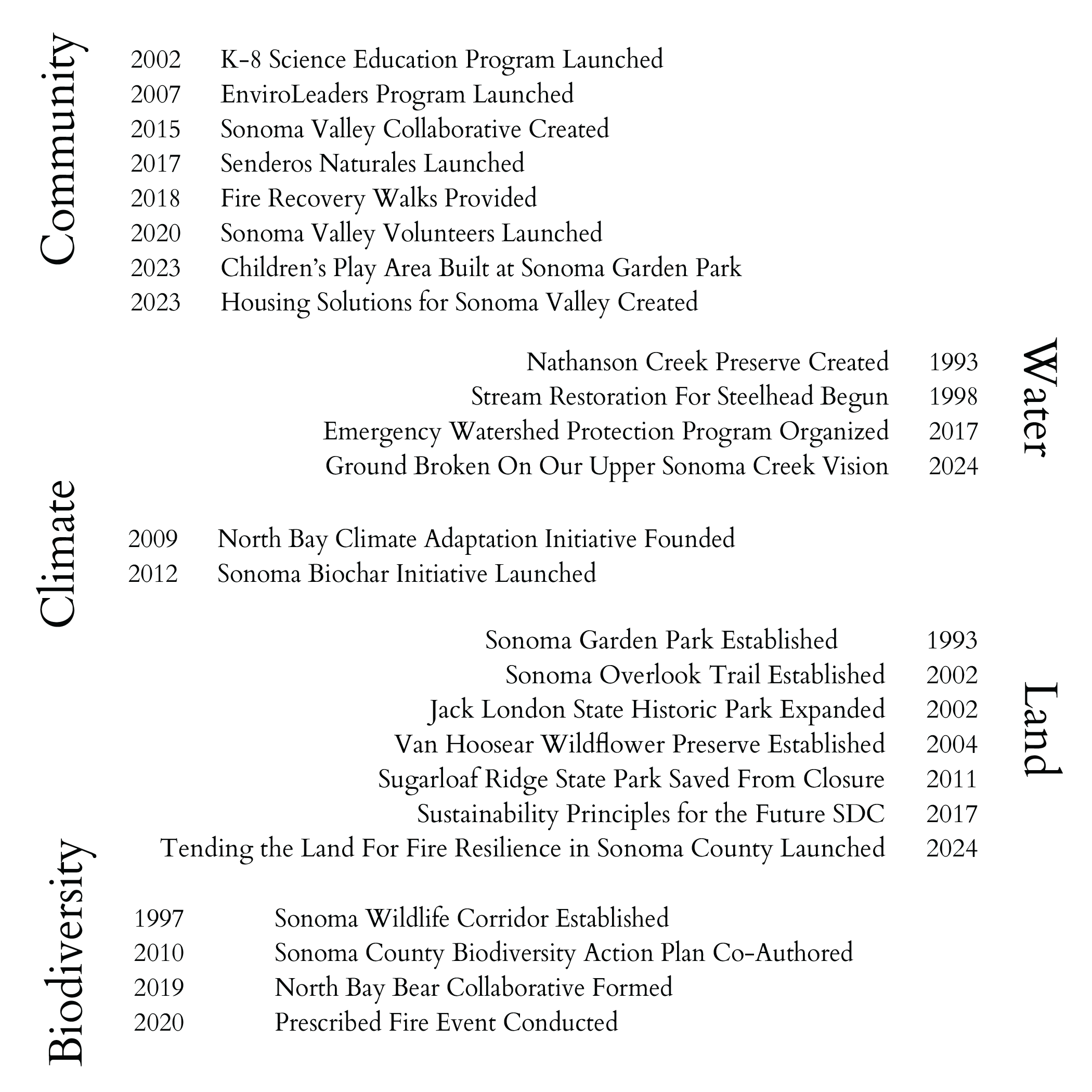

Sonoma Valley is a community where people are interested in connecting with our beautiful surroundings and making Sonoma Valley ecologically healthy. Sonoma Ecology Center builds on opportunities to resolve challenging local environmental issues and help other communities do the same. Our community increasingly understands that environmental, economic, and equity challenges must be solved together.

K-8 Science Education Program Launched
In 1991, we set out to bring environmental education to all Sonoma Valley kids. First, we created a lending library for schools. Later, we taught local teachers how to do their own locally-based environmental education. In 2002, we started putting our own educators in the classroom. That was the winning approach. Today, we are an integral part of the School District’s system, reaching over 1,300 kids a year with multiple science lessons in the classroom and field trips to Sonoma Garden Park and Sugarloaf Ridge State Park. Building on long-standing relationships with teachers, we’ve created a network of environmental education teams that provide outdoor educational experiences to every child in Sonoma Valley at no cost to schools. In 2024, we launched two exciting outdoor education programs to deepen students’ connection to nature. Fire Followers ensures that every 3rd-grade classroom in Sonoma Valley learns about fire ecology, fire adaptations, and Indigenous cultural fire practices. Capstone Campouts provide 5th-grade students—including those from Title 1 schools in the Sonoma Valley Unified School District—the opportunity to camp at Sugarloaf Ridge State Park with free gear and transportation, making outdoor experiences more accessible than ever.
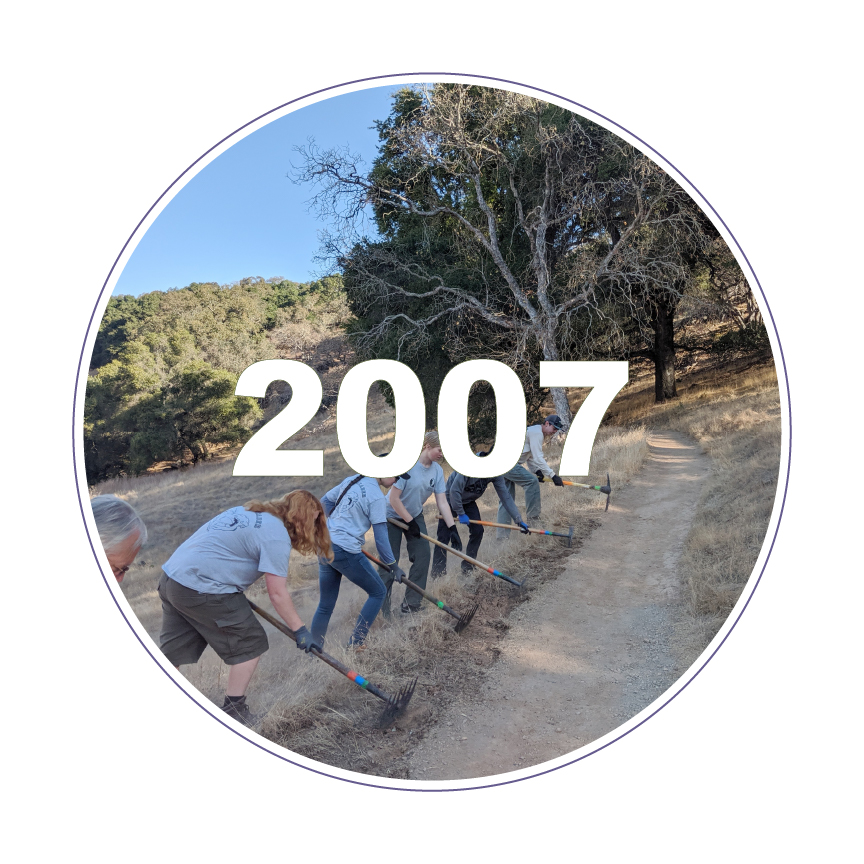
EnviroLeaders Program Launched
Because the teaching structure that works for younger students doesn’t work for teens, and because job training is a critical skill at that stage in life, we launched the EnviroLeader program. It creates an opportunity for local teens to gain essential job and life skills through practical, environmentally focused training in a semester-long paid internship that focuses on sustainable agriculture, community building and park stewardship. We are proud that for a period of time, Sonoma Ecology Center was the largest youth employer in Sonoma Valley, and proud that many of our graduated EnviroLeaders enter careers in the environmental sciences and become conscientious community leaders.
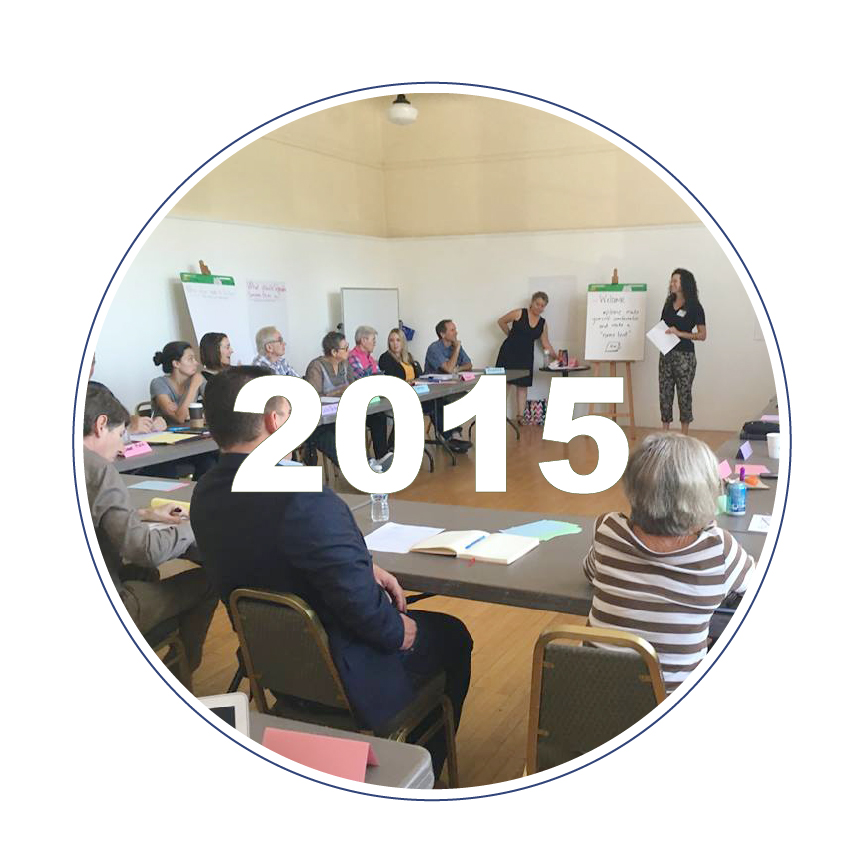
Sonoma Valley Collaborative (formerly Sustainable Sonoma) Created
25 years after Sonoma Ecology Center was founded, we realized the need to engage the whole community in our vision of a Sonoma Valley where people, land, water, and wildlife thrive. We saw challenges in our community that no one organization could solve alone, but affect all of us. We saw that environmental, equity and economic issues intersect in ways that invite coordination and collaboration across those sectors. Just weeks after the October 2017 fires, we convened a group of 30 community leaders across the broadest range of interests in Sonoma Valley to form the Sonoma Valley Collaborative Council, a coalition committed to working together around issues like emergency response, housing affordability and structural inequity. Since its formation, Sonoma Valley Collaborative has played a critical role in the Valley’s emergency response coordination, helped our community understand its greatest hopes and challenges, and fostered new ways of approaching community challenges.
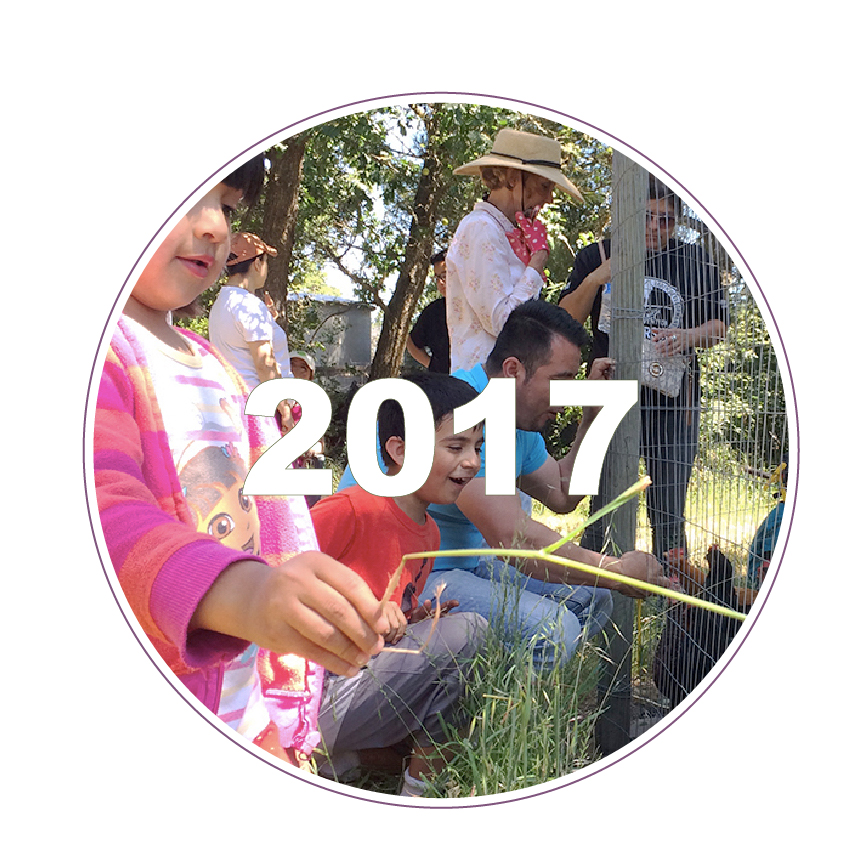
Senderos Naturales Launched
In 2017, we launched Senderos Naturales (“Natural Trails”), a Community Action Partnership, in an effort to make open space in Sonoma Valley more accessible and inclusive of the Latino community. We diversified our programs to include Spanish-language walks, hikes and overnight camping trips. To address barriers to open space, we created free garden plots at Sonoma Garden Park and provide transportation to some bilingual events. We partnered with La Luz Center and Vía Esperanza to do outreach in Sonoma Valley and Santa Rosa. Today, Senderos Naturales engages local Spanish speaking families at Sugarloaf Ridge State Park and Sonoma Garden Park.
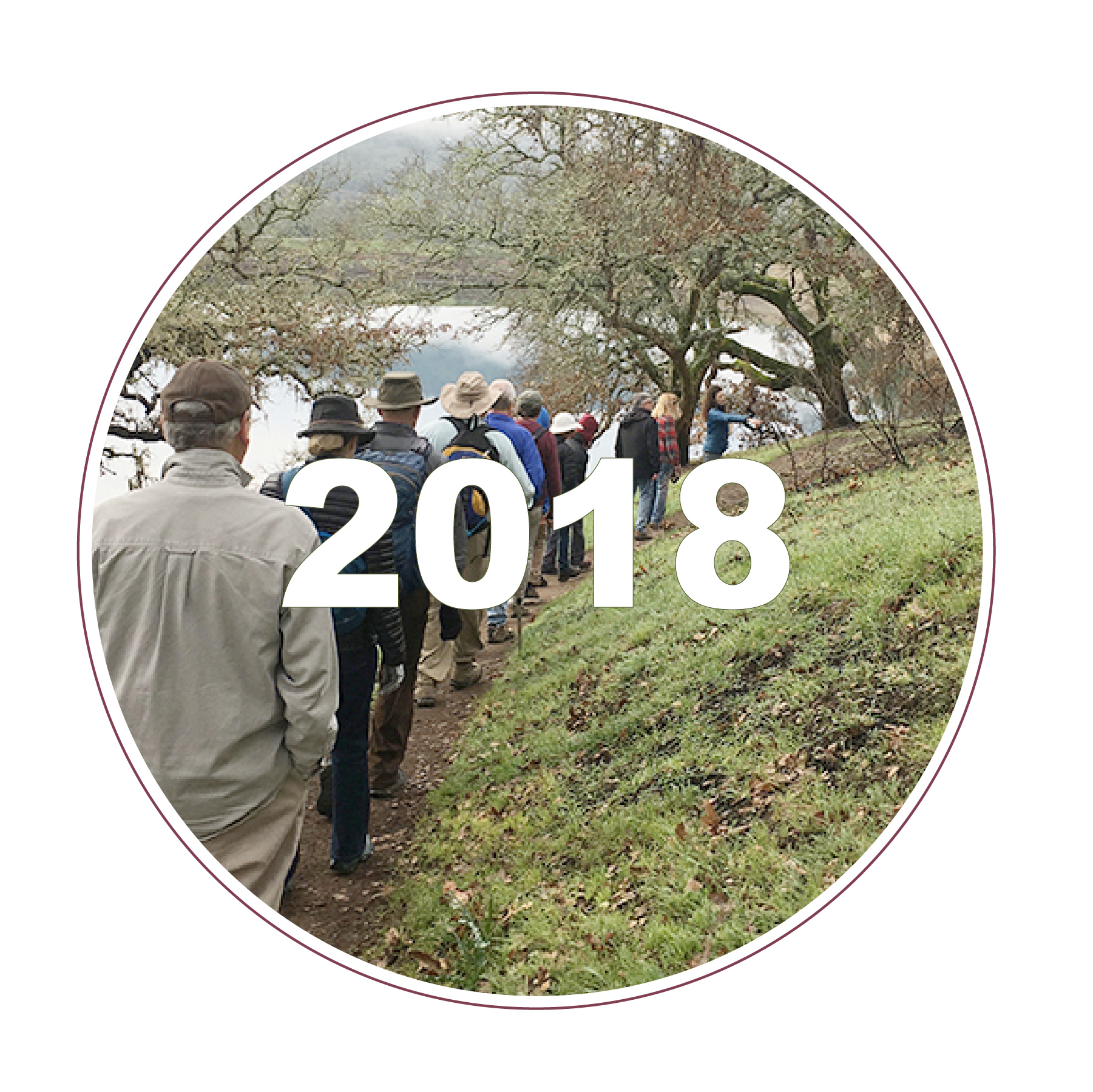
Fire Recovery Walks Provided
After the October 2017 fires burned 28% of Sonoma Valley, we realized how much our community would benefit from seeing the burned landscape through our eyes—that to understand how the land benefits and heals from fire helps us cope with its catastrophic impact on our communities. Our team of ecologists, biologists and educators led over 1,000 community members and nearly 400 students on a series of educational guided hikes through burned regions. After the Glass Fire in 2020, we provided another series of fire recovery walks and continue to deepen our understanding of Sonoma Valley’s ecosystems and believe that this knowledge serves to empower and heal our community. Learning, sharing and acting together will be the foundation of how we adapt to future challenges.

Sonoma Valley Volunteers Launched
In an unprecedented effort, Sonoma Valley’s organizations—governments, businesses, and nonprofits—came together to recruit younger volunteers and meet evolving needs created by the COVID-19 pandemic. Led by Sonoma Ecology Center and Sonoma Valley Collaborative, in partnership with the City of Sonoma and the Sonoma Valley Food Security Task Force, SonomaValleyVolunteers.org was launched to match local organizations with volunteers to respond to the COVID-19 crisis while our community’s core 60+ volunteer force sheltered in place. This Valley-wide system of coordination will be a resource going forward in times of crisis, change and adaptation.
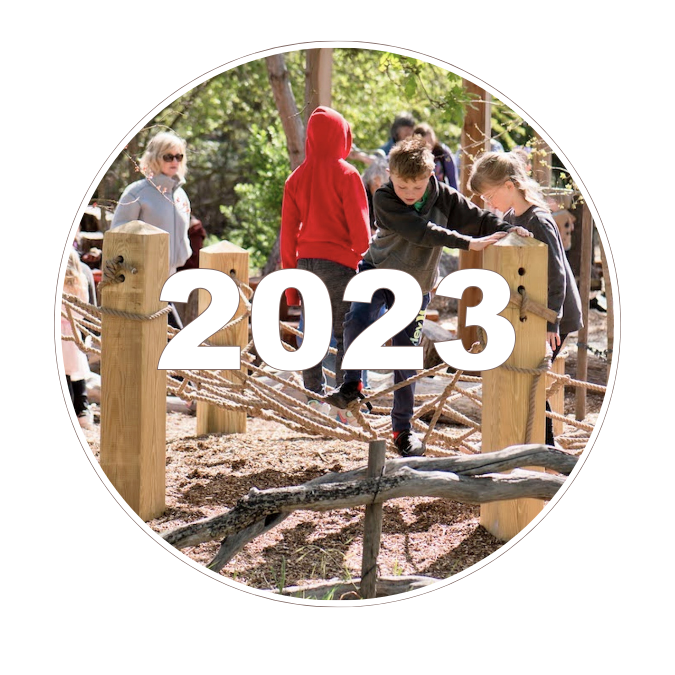
Children’s Play Area Built at Sonoma Garden Park
To celebrate Sonoma Ecology Center’s 30th anniversary of managing Sonoma Garden Park, we proudly opened a new Children’s Play Area, thanks to the generous donation of the Wedekind Family and the dedication of volunteer Mark Gonzalves, who generously donated his time and expertise to design and build the space. The Children’s Play Area features a variety of engaging, interactive play structures made from natural materials, including a climbing wall, slide, and water feature—offering young visitors a fun and nature-inspired experience. Since its opening, the play area has welcomed hundreds of new families to the garden, creating a vibrant and welcoming space for children to explore, learn, and connect with nature.
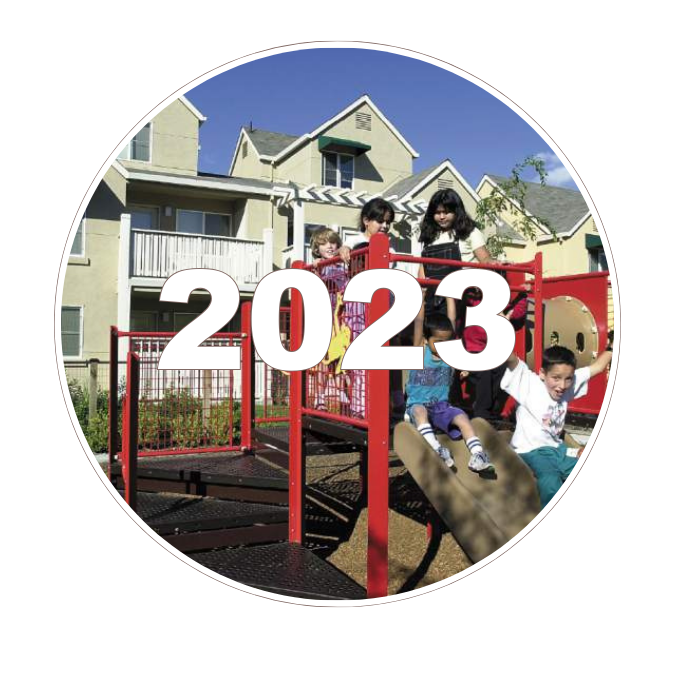
Housing Solutions for Sonoma Valley Created
We are leading Sonoma Valley Collaborative, a coalition of over 30 community leaders across a wide range of sectors, to work together, across boundaries, to increase, improve, and preserve housing that is affordable, for people who live or work in the Valley, within already developed areas, to create diverse, safe, complete neighborhoods. With the united voice of the broadest coalition in Sonoma Valley, we influenced Sonoma’s City Council to adopt the most pro-housing plan ever in the City of Sonoma. We won 19 of the 26 housing affordability policies we advocated for, in many cases writing proposed language that the City of Sonoma adopted word-for-word in their January 2023 Housing Element.

Without owning any land or finalizing any transactions, Sonoma Ecology Center has a long track record of quietly and gently bringing landowners, nonprofits, government agencies, philanthropists, and community members together to protect natural lands in Sonoma Valley through purchases or easements.
With our intimate knowledge of the land, our deep social connections, and our collaborative approach, we expect to foster the protection of yet more healthy habitat lands in the future.
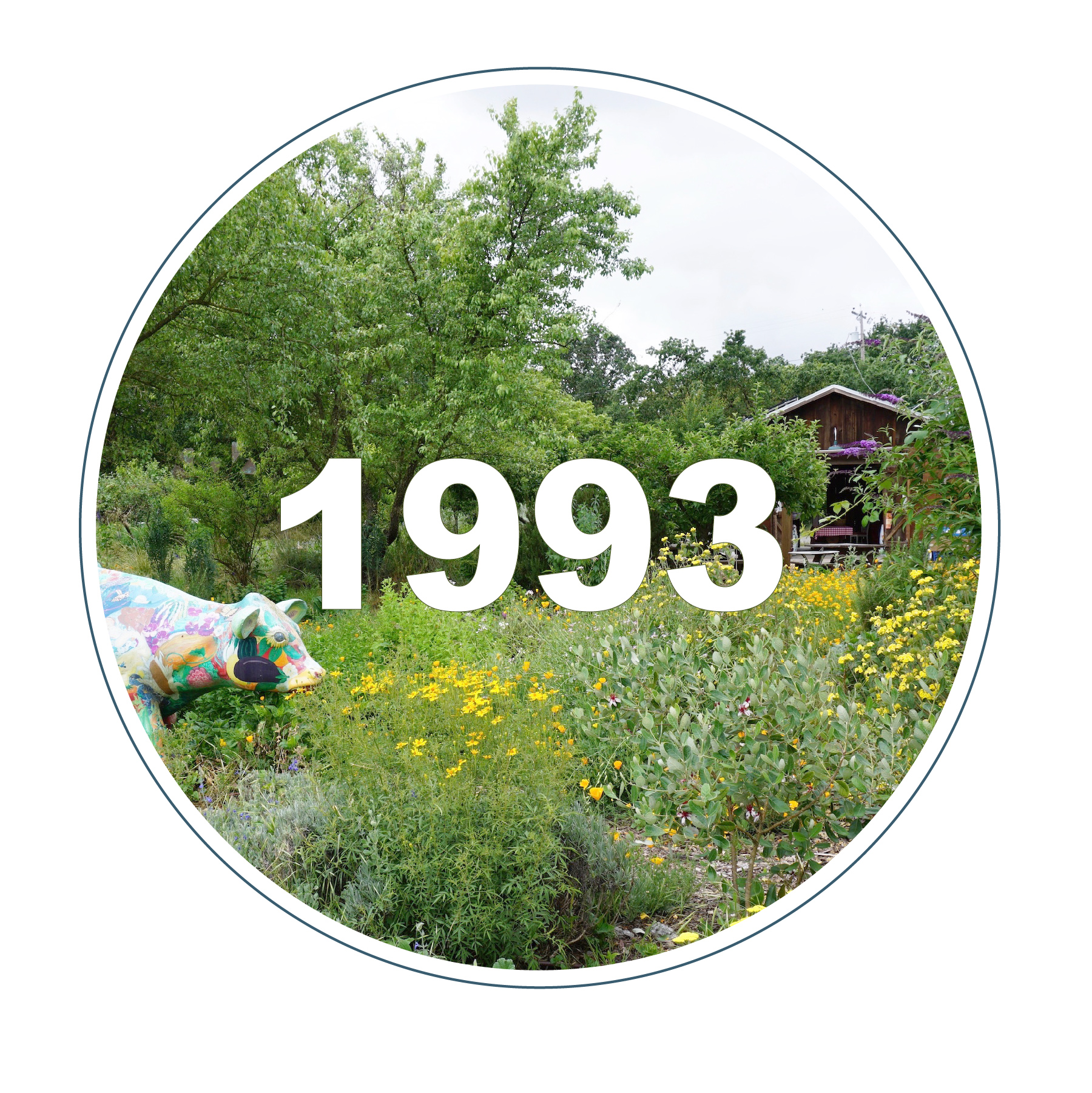
Sonoma Garden Park Established
Sonoma Garden Park was established as the first subscription farm box program in Sonoma Valley, on a six-acre former prune orchard donated to the City of Sonoma by Pauline Bond. From the beginning, it was a unique place for Valley visitors and residents to experience local organic foods and learn about small-scale food production. Today, it is an interdisciplinary learning environment with demonstration gardens, community garden plots for rent, a native plant nursery, educational workshops, and paths that wind among berries, flowers, oak trees, and happy chickens. Each year, hundreds of local students come to Sonoma Garden Park for hands-on science education, and more than 200 youth and adults volunteer thousands of hours of community service.

Sonoma Overlook Trail Established
During the 1990’s, locals began calling for both a Valley-wide trail system and the permanent protection of Sonoma’s hillside backdrop, which in 1999 was threatened by resort development. Out of these concerns, the idea of building a public trail on the hillside took shape. SEC board members led efforts to to create a trail network on the site—dubbed “Sonoma Overlook Trail” in a naming contest. It was built with community contributions and significant volunteer help. SEC also worked with the City to clean up an old dumpsite, and to form Sonoma Overlook Trail Stewards, a volunteer nonprofit group of which SEC is fiscal sponsor. To this day the trail and land—a sloping oak woodland that offers eye-popping views and includes the historic cemetery—are owned by the City and managed by volunteer trail stewards in an arrangement that benefits the entire community.

Jack London State Historic Park Expanded
Sonoma Developmental Center once grew food for its own residents and employees, and needed a lot of land to do it. Over time, as the state facility shrank its services, it ceased using that land, and in the late 1990s part of the property was designated as “surplus,” at risk of being sold to the highest bidder. Seeing an opportunity to protect that land in perpetuity, SEC and partner Sonoma Mountain Preservation worked with Sonoma County Ag + Open Space to transfer 600 acres—encompassing deep forest, a historic fruit orchard, and steelhead-bearing streams—to neighboring Jack London State Historic Park—shifting the land from one state agency to another and guaranteeing its protection forever.
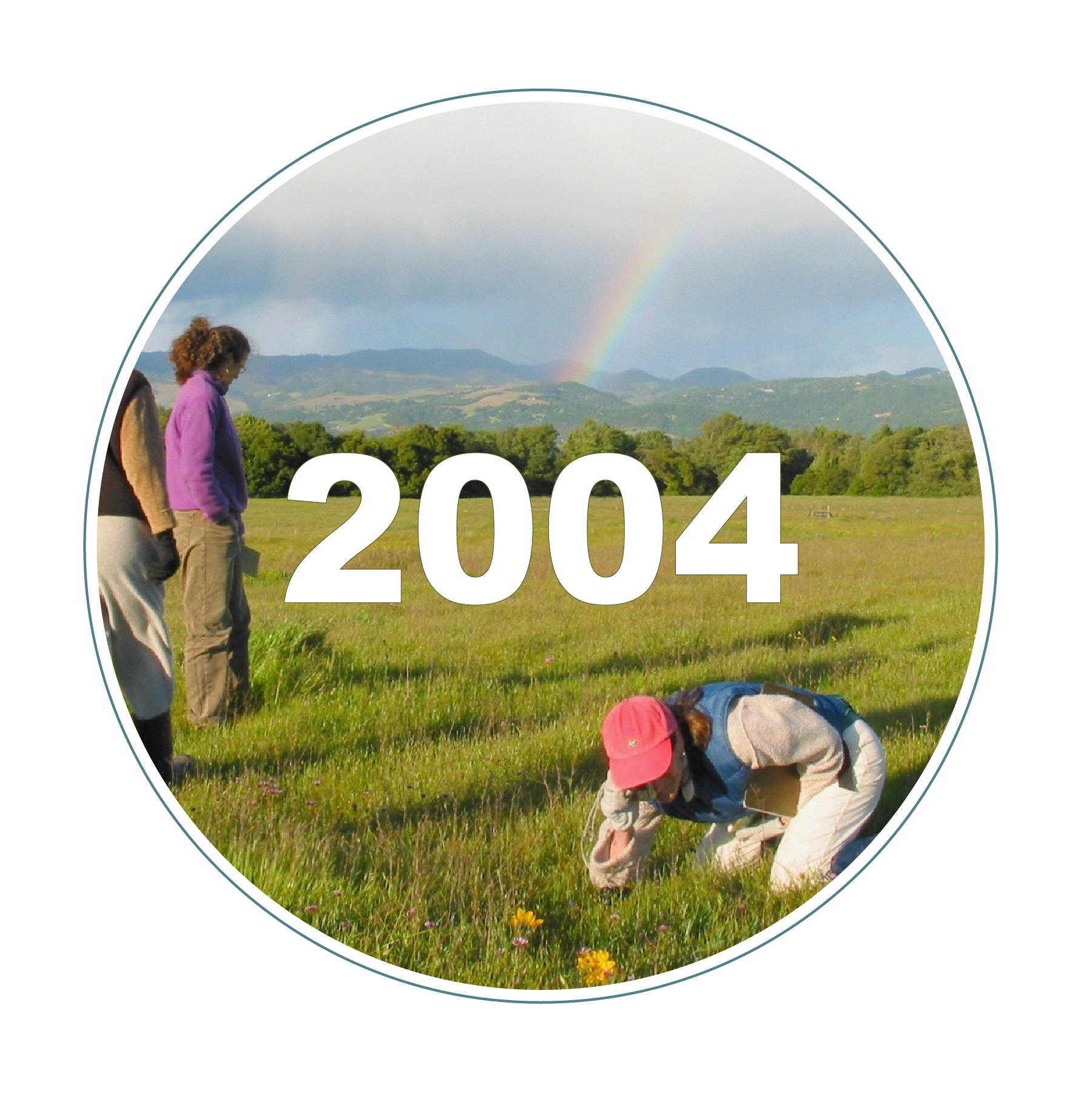
Van Hoosear Wildflower Preserve Established
Muriel Van Hoosear left her three daughters an undeveloped 164-acre meadowland located west of the City of Sonoma that is home to dozens of native wildflower species including two rare flowers. Asked by the family to help preserve the meadows, SEC—particularly our current Board member Ellie Insley—worked with Ag + Open Space, Wildlife Conservation Board, and Community Foundation Sonoma County to make this possible. The value of the property meant the family could be paid for it to be put into easement, protecting Van Hoosear as wild forever—a welcome contrast to so much similar land now given over to houses and vineyards. As part of the arrangement, SEC manages the land and leads free wildflower walks each spring to share this land with the community. In 2020 and 2021, SEC conducted prescribed burns at the Preserve—assisted by numerous organizations promoting beneficial fire—to rejuvenate its native plant species and control its invasive ones.
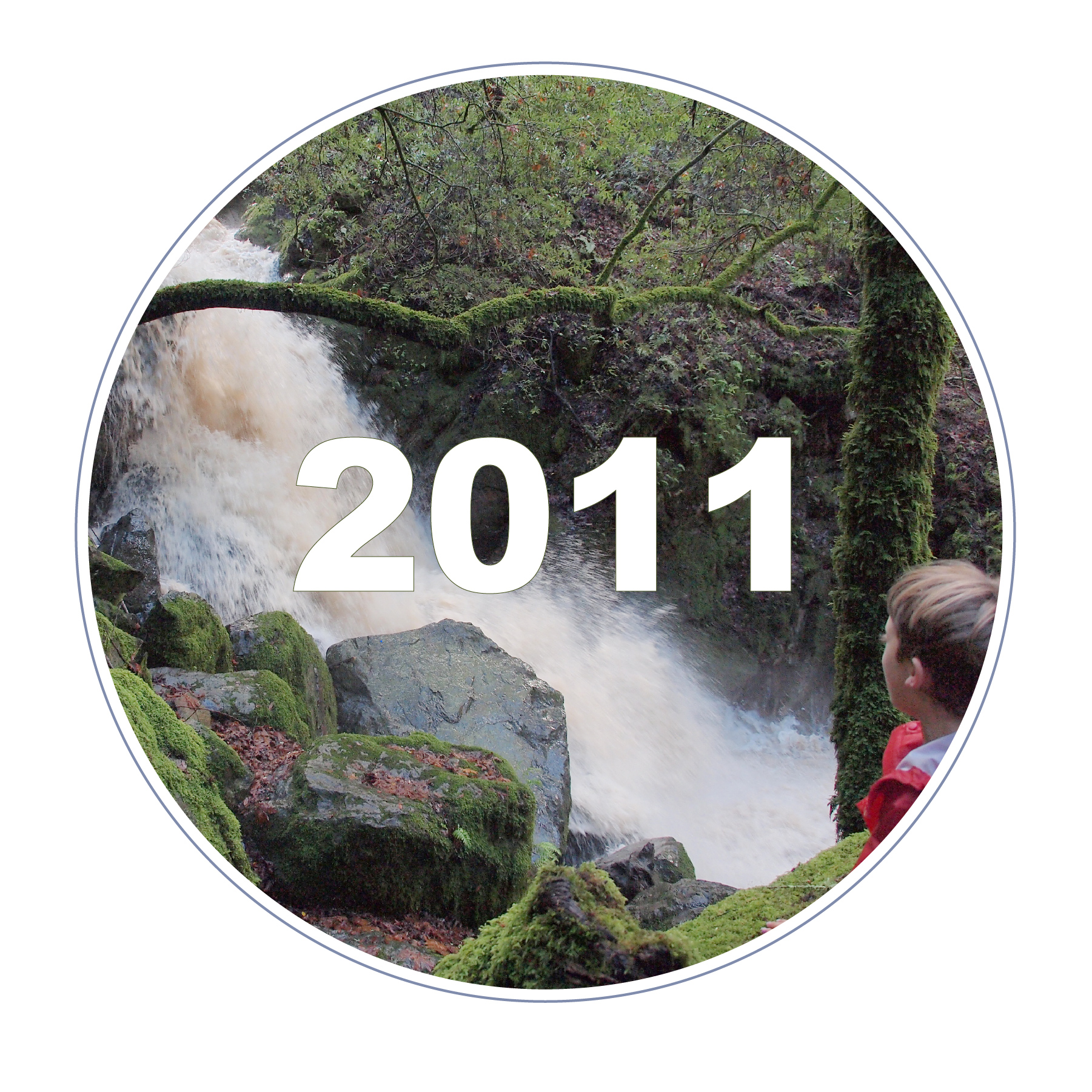
Sugarloaf Ridge State Park Saved From Closure
When the state budget crisis forced the closure of Sugarloaf Ridge State Park, Sonoma Ecology Center pulled together a team of skilled nonprofits to create Team Sugarloaf, which reopened the park in 2012 and assumed day-to-day responsibility for this local landmark. Since that time, we have welcomed over 1,000,000 visitors, led over 1,000 guided hikes and harnessed over 20,000 volunteer hours to improve and operate the park. An incredible community of volunteers came together to repair infrastructure after 80% of the Park burned in the Nuns Fire in 2017 and Glass Fire in 2020. We have adapted our numerous programs and the campsites to foster distancing and help people get outdoors safely. As the lead organization in Team Sugarloaf, we have carried Sugarloaf Ridge State Park through major changes, and look forward to keeping this vibrant open space open and accessible to the public for years to come.
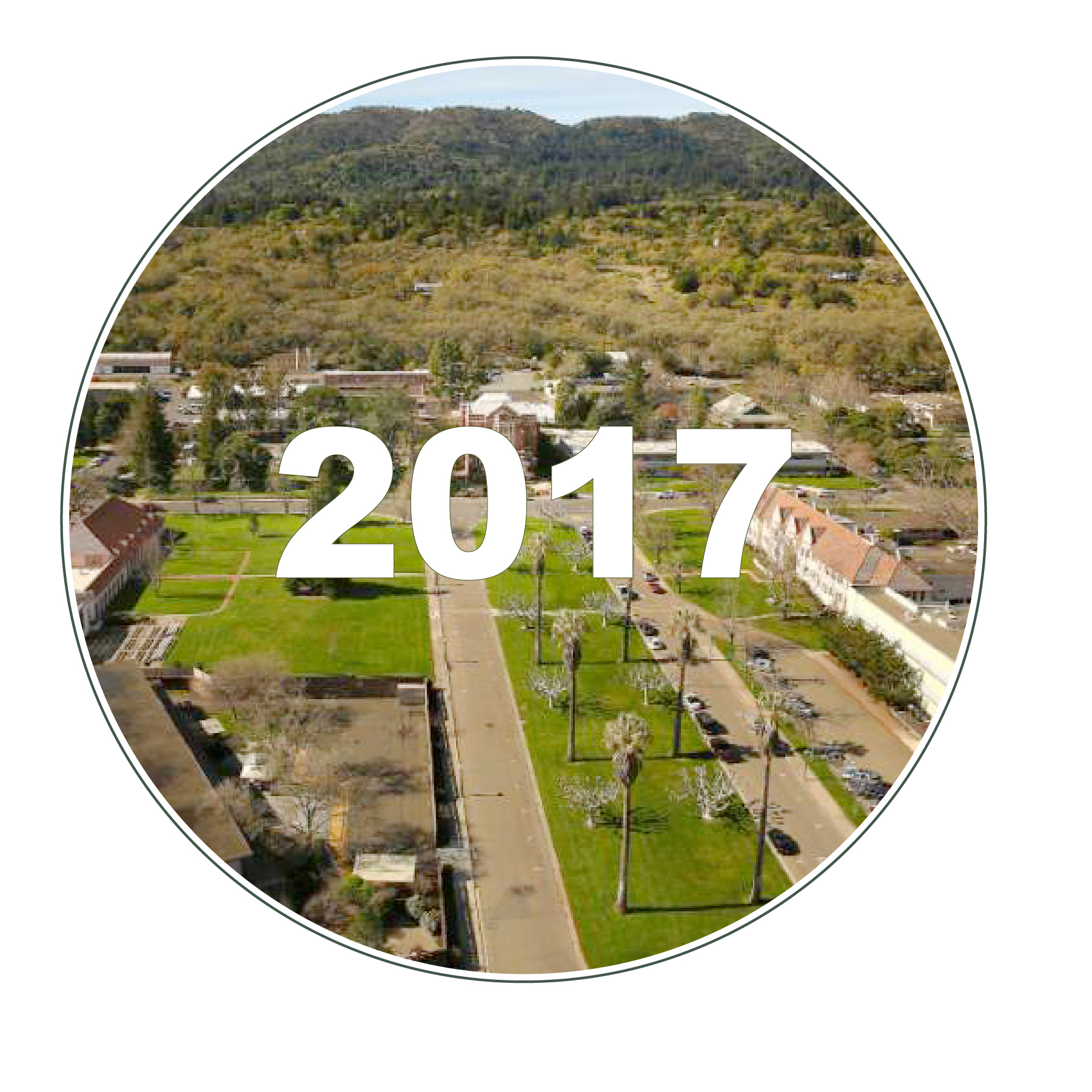
Sustainability Principles For the Future SDC Established
Repurposing the 200-acre campus of the Sonoma Developmental Center, within its 750 acres of open space, is a once-in-a-generation opportunity. Our connections to this land run deep: we have monitored Sonoma Creek here for 15 years, partnered with State Parks to tame erosion in the upper forests, worked out of offices here for 20 years, and led fire recovery walks over its burned ground. We are clear that a redeveloped Eldridge can bring an array of benefits to Sonoma Valley: new kinds of jobs, a wide protected wildlife corridor, a climate-resilient water source, affordable housing in a socioeconomically integrated neighborhood, an incredible trail system, healthy wide riparian forests, and a huge, biodiverse, protected area of state-level significance. To assure that the community’s highest standards are met as the site’s future is plotted, SEC led many groups in writing a set of Sustainability Principles. These Principles stand for the community’s intention that the future Eldridge will regenerate water, make its own energy, rebuild biodiversity, honor the site’s many pasts, and help lead the community to a better future.
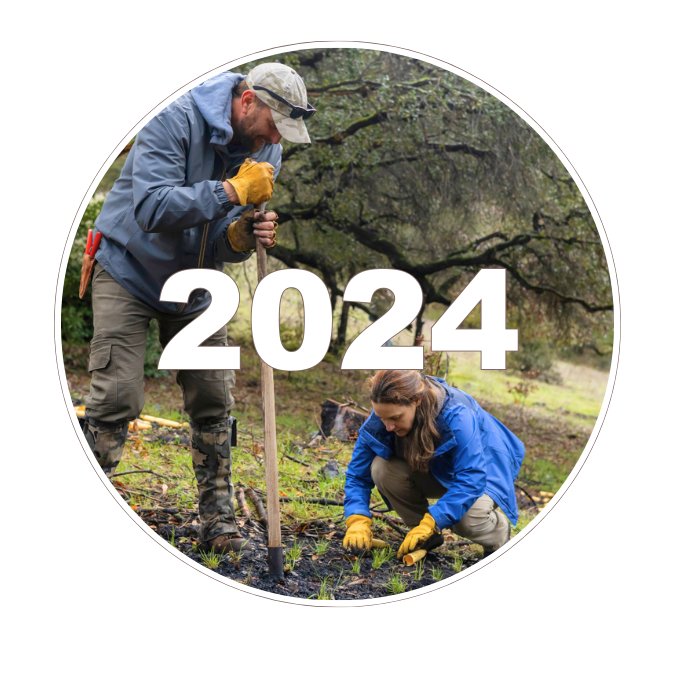
Tending the Land For Fire Resilience in Sonoma County Launched
We launched Tending the Land for Fire Resilience in Sonoma County, an online guide created with contributions from over 50 of Sonoma County’s experts with practical strategies for stewarding land to meet goals such as improving fire resilience, conserving water, enhancing wildlife habitat, and fostering ecological health. Tendingtheland.org provides actionable tools to help anyone care for wildlands in the best way possible.

The dangers of runaway climate change that we see all around us—the fires, floods, droughts, and heat waves—call for two types of responses: readying ourselves for climate impacts, and drastically reducing greenhouse gas emissions.
As our partners focus on reducing emissions, Sonoma Ecology Center has focused on preparedness, using science and outreach to better understand climate hazards and to spur action. We also pull carbon out of the atmosphere and sequester it, when we protect or restore natural lands, and promote the wise use of biochar.
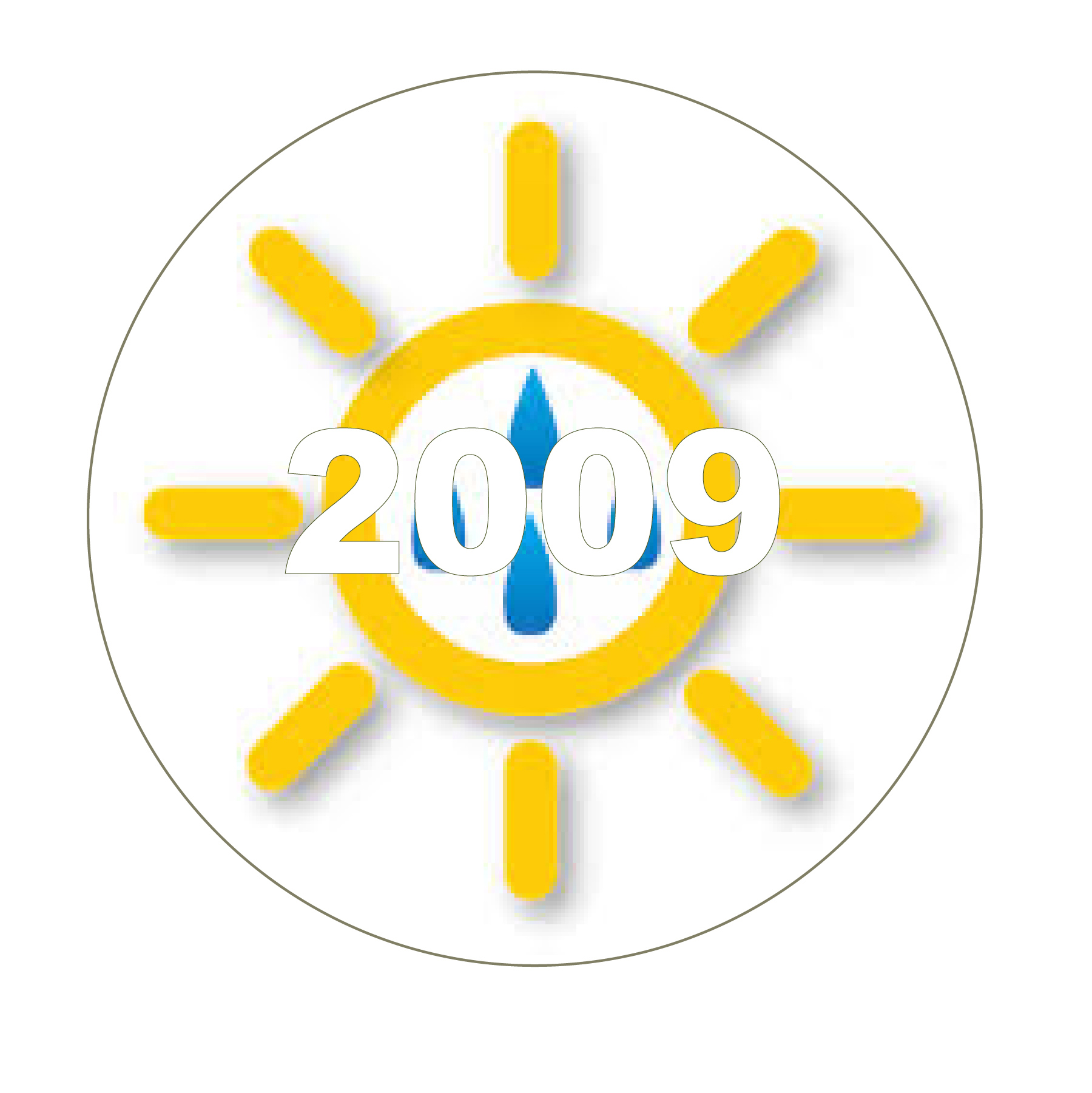
North Bay Climate Adaptation Initiative Founded
In 2009, Sonoma County had set bold goals for reducing climate pollution, but no one was talking about the impacts of a changed climate: increased wildfire, infestations, more deadly heat waves, less predictable rainfall, and more. To fill that gap, we co-founded and subsequently led the North Bay Climate Adaptation Initiative. SEC was the lead author for the Initiative of Sonoma County’s official climate vulnerabilities report, taught numerous workshops helping land and water managers across the North Bay translate arcane climate projections into practical management actions, and led creation of a Climate Resilience Roadmap for Sonoma County. In part based on the Initiative’s work, most of our local governments now routinely make their plans based on future conditions that are different from those of the past. This keeps both people and the land more resilient and more prepared. The North Bay Climate Adaptation Initiative was nationally recognized by the Obama Administration during a New York ceremony in 2016.
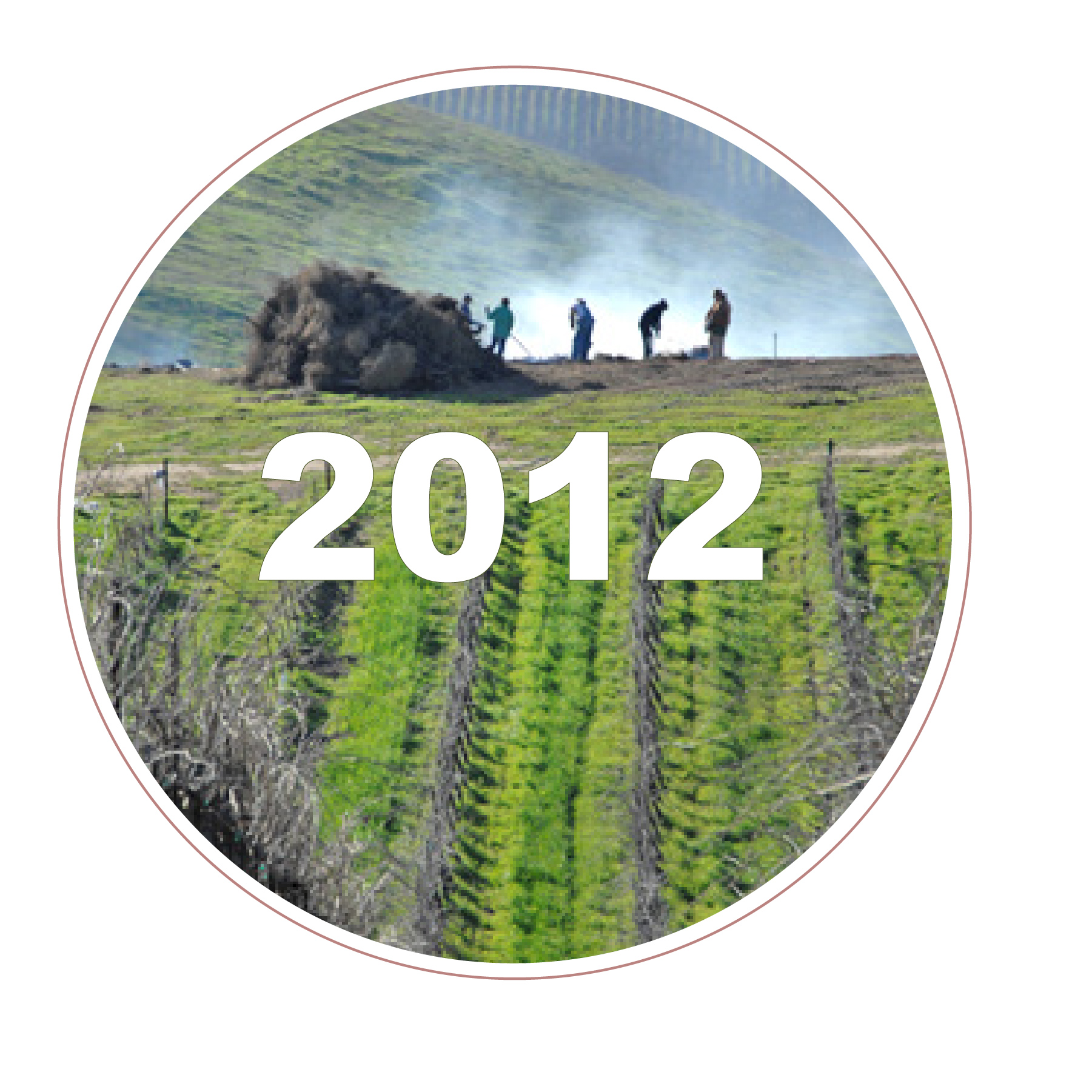
Sonoma Biochar Initiative Scaled Up

The way we currently use and manage water in Sonoma Valley creates deficits in our groundwater aquifers and our creeks. Our surface waters are polluted by excess sediment, nutrients like yard fertilizers, and pathogens. A warming climate makes reversing these trends ever more urgent.
If we absorb more water into the ground during winter, when it is abundant, use less water and re-use it more during summer when it’s scarce, and avoid chemicals, we could have more and cleaner water for ourselves, and more fish, birds, wetlands, and healthy oak trees and streamside forests.
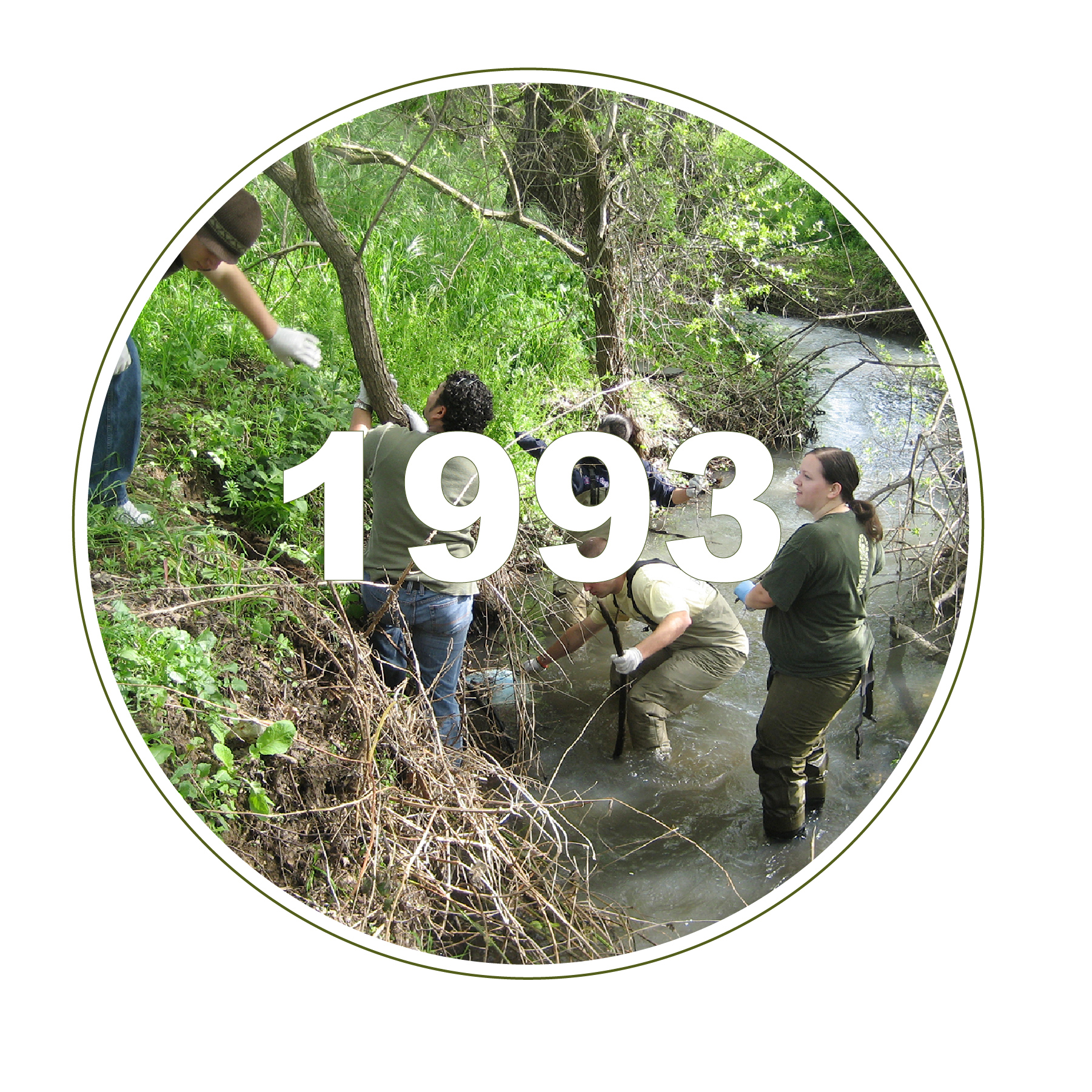
Nathanson Creek Preserve Created
Nathanson Creek, running north-to-south through the middle of the City of Sonoma, had deteriorated over the years due to pollution and neglect. Inspired by volunteer Christy Vreeland, Sonoma Ecology Center began leading clean-up and restoration efforts along its banks. Today, with help from partners City of Sonoma, Sonoma Valley Unified School District, Sonoma Water and Ag + Open Space, Nathanson Creek Preserve is a beautiful and thriving greenway, accessible to the public by bridges and walking trails. Its waters are cooler and clearer, allowing Chinook salmon to spawn in wetter winters. Sonoma Valley High School and Adele Harrison Middle School use Nathanson Creek as a living outdoor classroom. Together with our Restoration staff, local gardening enthusiasts volunteer to keep the native plant demonstration garden at MacArthur Street flourishing. Across the street, a former empty lot now demonstrates a widened creek floodplain of the type that could, if replicated up and down Nathanson Creek, reduce flooding in town, and improve habitat for fish and other animals that depend on streams.
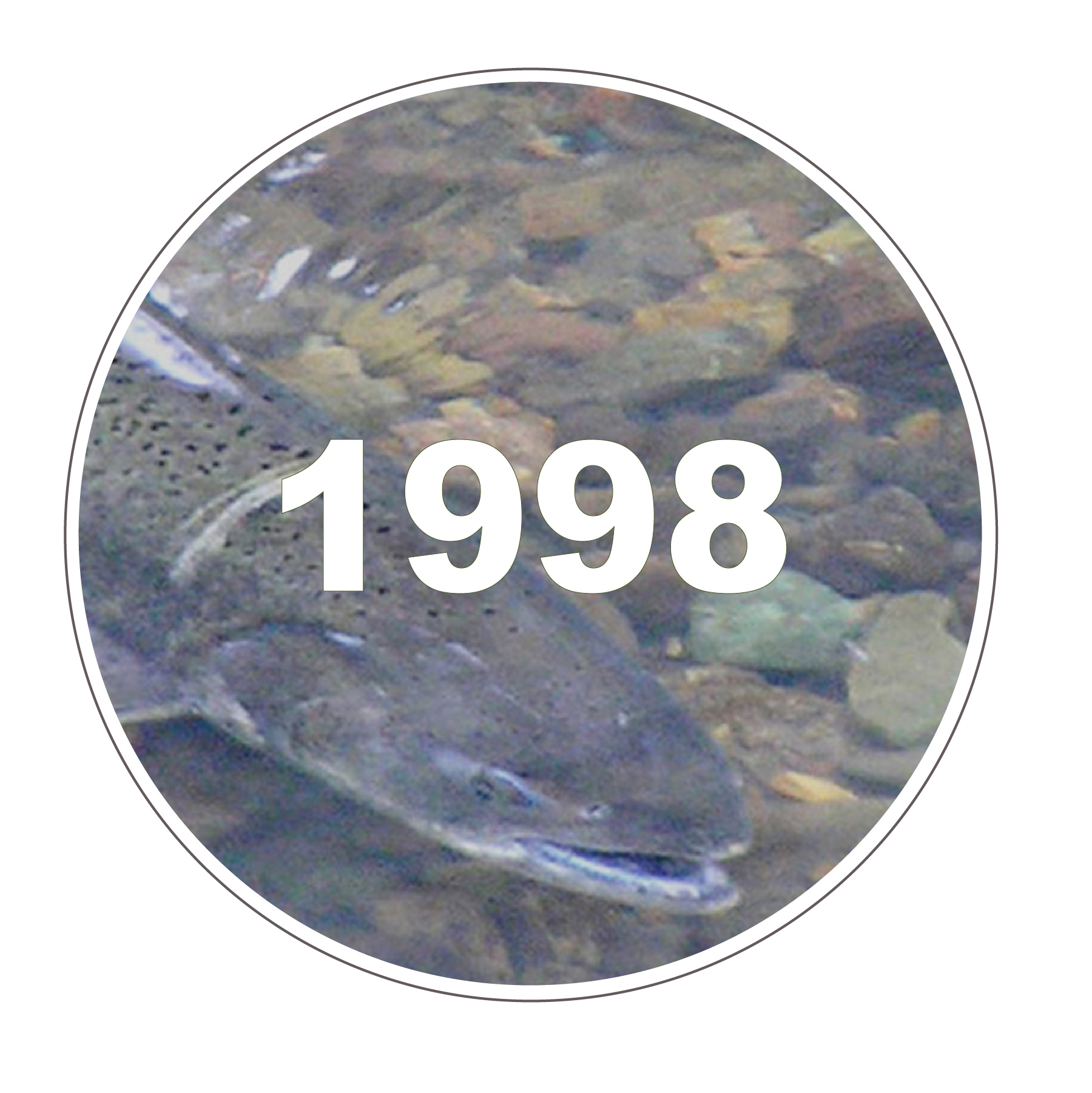
Stream Restoration For Steelhead Begun
Our 1990’s “Watershed Visioning Potlucks” evolved into the Sonoma Valley Watershed Council. Local scientists, restoration experts and other community members began to study and work for a thriving Sonoma Valley watershed—efforts that included research, creek cleanups, invasive plant removals, replanting and more. SEC then became a main driver for eliminating Arundo donax, a noxious invasive weed, in Northern California. As we started to better understand the importance of native species to stream health, we began designing and building better vegetative stream channels in Sonoma Creek, sharing this knowledge throughout the region. Along the way, we realized that steelhead trout are a key indicator species and began to use them as a measure of overall stream health in Sonoma Valley. Today, we’re continuing our important work in Sonoma Creek and its tributaries on the issues of vegetation, fish barriers, erosion and debris, summer flows, groundwater recharge, water quality, and flooding—years of work centered around helping the fish, which ultimately helps the stream and the people living beside it.
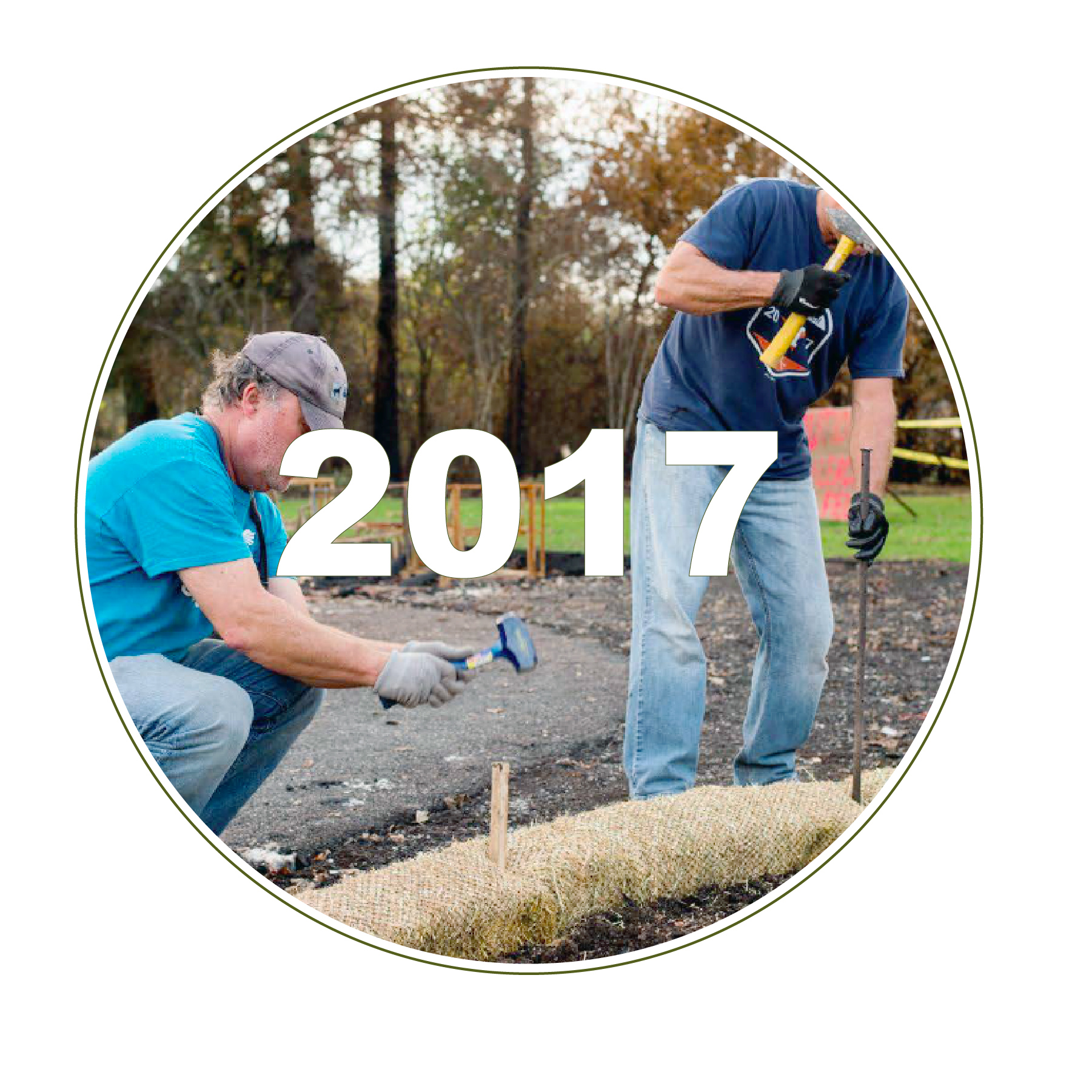
Emergency Watershed Protection Program Organized
After the October 2017 fires burned more than 28% of Sonoma Valley, we recognized the urgent need to protect the Sonoma Creek watershed from toxic ash and debris that threatened to wash from burned buildings and cars into creeks, threatening to contaminate the water and wildlife with heavy metals, asbestos, nitrates, and sulfates. We created maps showing where burned structures lay within 100, 200, and 300 feet of waterways and developed a system of prioritizing properties for containment. This priority system was adopted to sequence the work of at least some of the later federal debris cleanup contractors. Volunteer Nancy Kirwan organized dozens of volunteers to contact landowners and work with staff to surround burned structures with sandbags and straw wattles, keeping their toxins in place until cleanup crews could arrive. All told, 80% of the burned structures posing the greatest threat to local streams were contained, protecting all the burned sections of stream that host steelhead. With dozens more burned structures left behind by the Glass Fire in 2020, Sonoma Ecology Center relaunched this program to protect the watersheds of Sonoma Creek, Santa Rosa Creek and Mark West Creek.
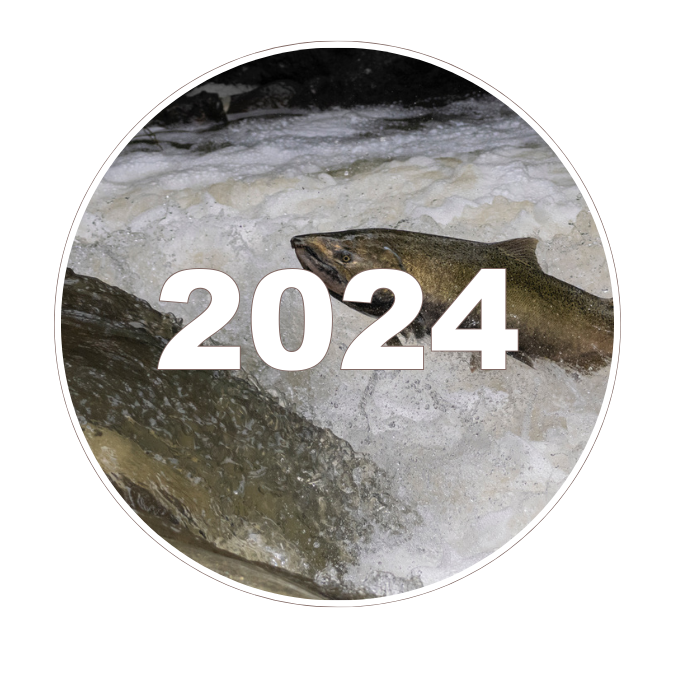
Ground Broken On Our Upper Sonoma Creek Vision
We are working towards our Upper Sonoma Creek Restoration Vision to improve salmonid habitat and reduce erosion and sediment going into the creek. The first major project advancing Sonoma Ecology Center’s long-term plan to improve the health of Upper Sonoma Creek was completed at Morton’s Warm Springs in Glen Ellen, resulting in improved wildlife habitat, increased biodiversity, and better appreciation of the creek by Morton’s visitors. The project focused on enhancing the biodiversity of the creek by improving habitat for the endangered Central California Coast steelhead trout. A keystone species, steelhead maintain a critical balance for other species in the ecosystem. By restoring the natural creek floodplains and allowing for more water to filter down, the project will also improve water quality, increase groundwater recharge, and reduce flooding and bank erosion.

Sonoma Valley is home to an amazing variety of species in a small place. A large proportion of California’s species exist in this compact area, that is only a tenth of one percent of California’s entire land area. Since the Valley is mostly privately owned over thousands of parcels, it needs all of us to be good stewards to sustain this amazing legacy for the future.
Biodiversity is in catastrophic decline around the world, with one in four species at risk of extinction. Sonoma Valley, in a similar decline, still has extraordinary biodiversity that supports numerous ecological services that we rely on. Sonoma Ecology Center takes strategic action to stabilize and strengthen biodiversity in Sonoma Valley.
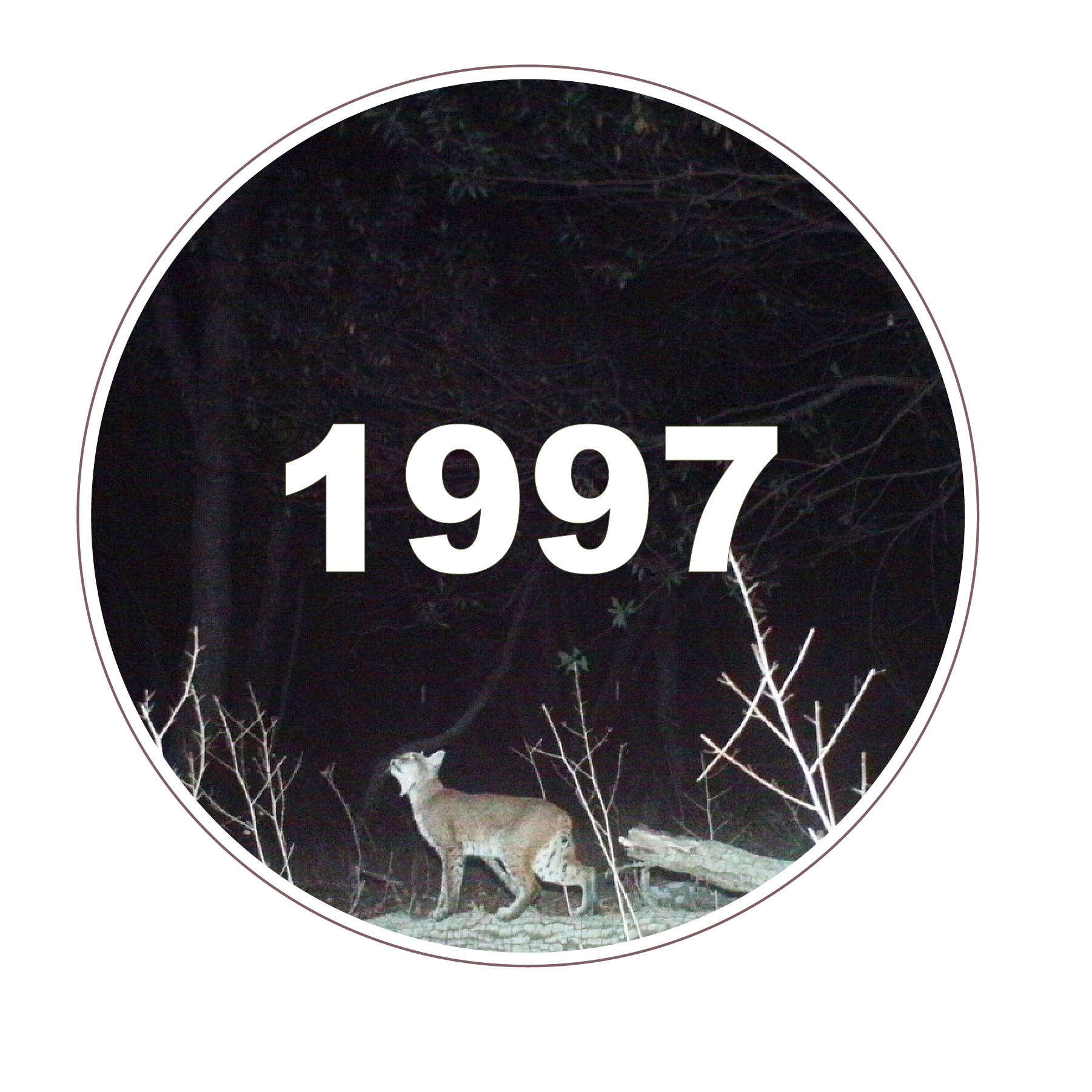
Sonoma Wildlife Corridor Established
It all started when SEC volunteer Christy Vreeland pointed out that Sonoma Mountain was slowly but surely becoming a biological island, due to development of the land surrounding it. This meant that plants and animals on the Mountain were cut off, less able to migrate to and from it to find food, water, and genetic diversity. Ultimately this isolation would harm its viability as a native habitat. The solution was a habitat corridor—essentially a bridge of open space—connecting Sonoma Mountain through the Sonoma Developmental Center and hundreds of acres of additional protected wild lands on the other (east) side of Sonoma Valley. Working with the county’s Ag + Open Space and Sonoma Land Trust, lands around the corridor were acquired and made accessible to native species. This Corridor, Sonoma County’s first ever, later became formalized as part of the county’s general plan. Now this work continues as we help plan the future of Sonoma Developmental Center.

Sonoma County Biodiversity Action Plan Co-Authored
Sonoma Valley is at the intersection of several biodiversity zones, making it an unusually rich place for biodiversity. For example, our county comprises just 1% of California’s total area, but contains 2,210 known native plant species. Realizing that a large and growing human population lives in and amongst this biodiversity, and that we need to better understand it in order to preserve it, SEC began an effort to more closely examine and codify the biodiversity found here. Working with others in the county, we produced a landmark Action Plan—co-authored by Karen Gaffney, now at Ag + Open Space, and SEC’s Caitlin Cornwall—that tells us what we’ve got to lose, and what we must do to keep it. Based on research and interviews with multiple biologists specializing in our region, the Action Plan continues to help us protect this ecologically rich region.
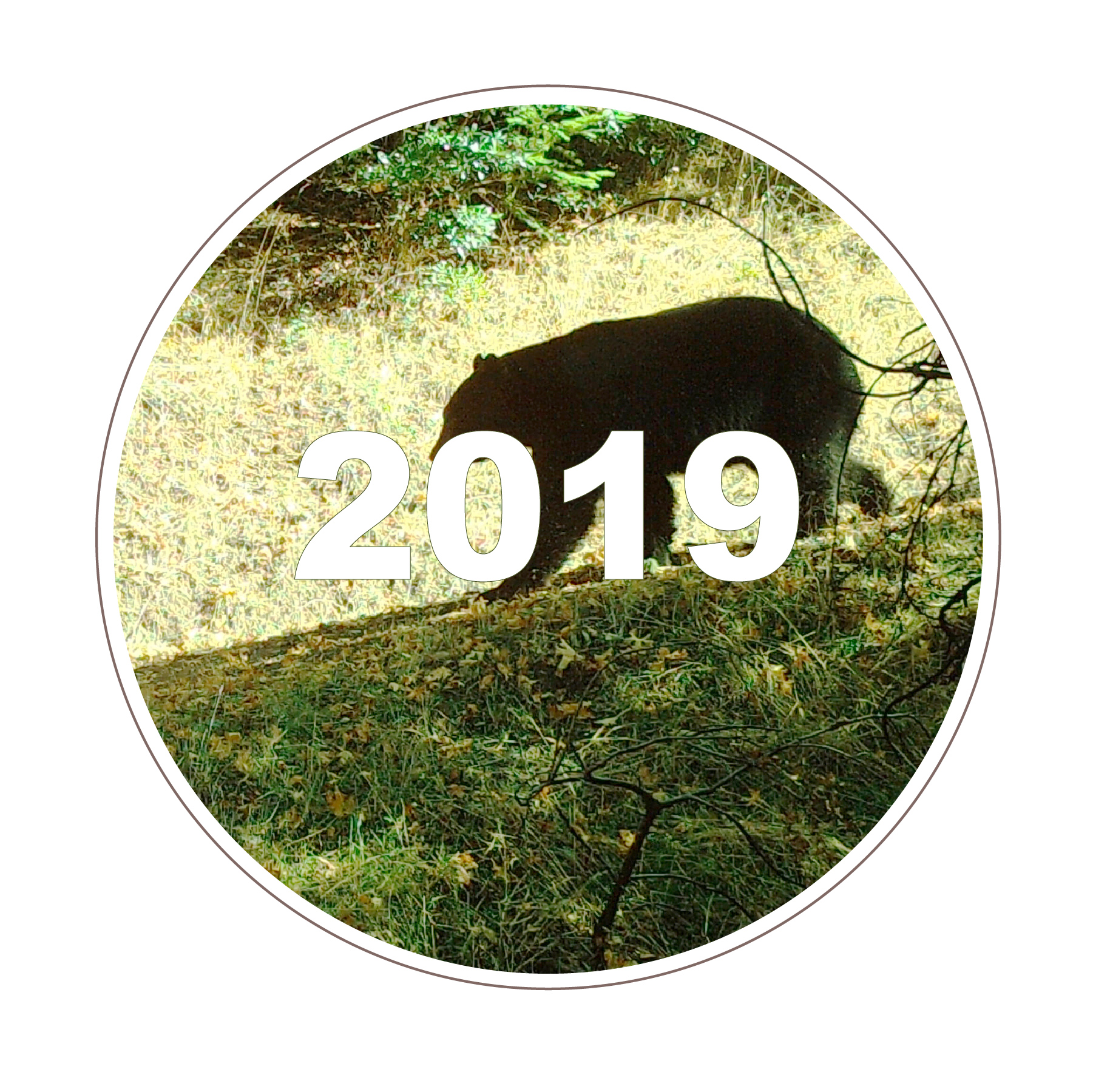
North Bay Bear Collaborative Founded
In the late 2010’s, proliferating critter cameras showed that black bears—including mothers with cubs—had moved into the Mayacamas Mountains full time. The North Bay Bear Collaborative was launched to get ahead of challenges that may arise from an increasing black bear population. It is a working group of agencies, non-profits, landowners, and individuals committed to being proactive liaisons between humans and bears. Our aim is to make the North Bay safer for both bears and people.
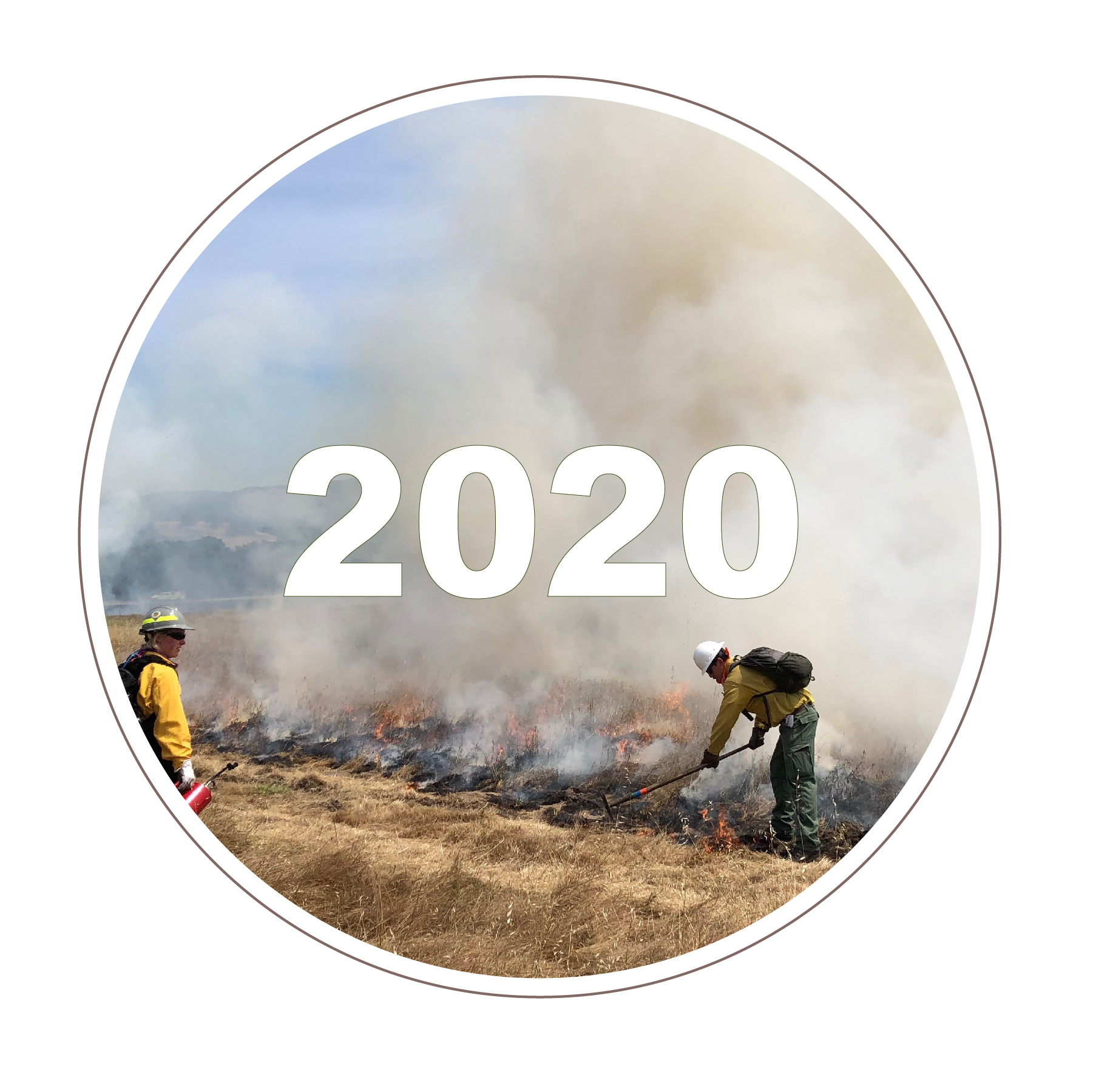
Annual Prescribed Fires at Van Hoosear Wildflower Preserve Initiated
A critical tool for managing fire in Northern California is fire itself. Historically, indigenous Californians used fire on a massive scale to promote the plants and animals they preferred. After native lands were stolen and occupied by European settlers, a culture of fire suppression replaced this tradition, resulting in conditions that reduce biodiversity, reduce carbon sequestration, and make catastrophic fire more likely. For the last decade, Sonoma Ecology Center has worked to reintroduce fire as a land management tool. With Audubon Canyon Ranch’s Fire Forward program, Good Fire Alliance, and many other partners, Sonoma Ecology Center burned part of the meadows at the Van Hoosear Wildflower Preserve in 2020 and 2021, with a burned planned for 2022. Scaling up and normalizing prescribed fire is one of the many ways Sonoma Ecology Center is keeping people safer while restoring biodiversity.
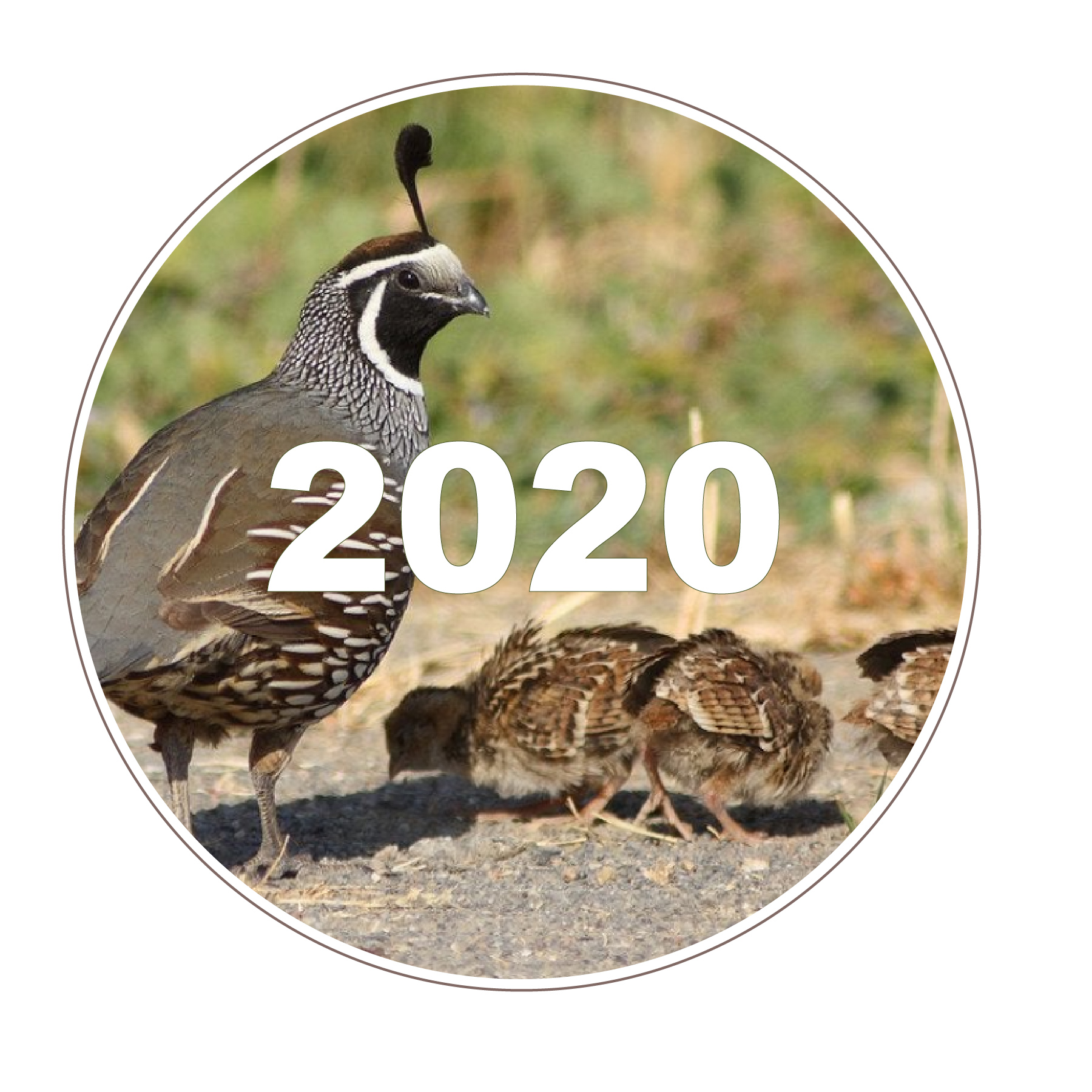
Resilient Landscapes Coalition Founded
In partnership with the UC Master Gardner Program of Sonoma County and Habitat Corridor Project, we are teaching the community how to protect and enhance wildlife habitat, conserve water, energy and other resources, and increase safety through the creation of biodiverse, fire-wise landscapes. The Coalition provides specific design, plant selection, and maintenance guidelines for the defensible space zone, using native plant communities as the framework for plant selection. In the short time offered, the resilient landscape trainings have reached over 300 participants in Sonoma County with detailed information that also meets County and State code requirements and fire-wise recommendations. We need to work as a community to be fire-wise, sustainable, and to protect and enhance wildlife habitat.
